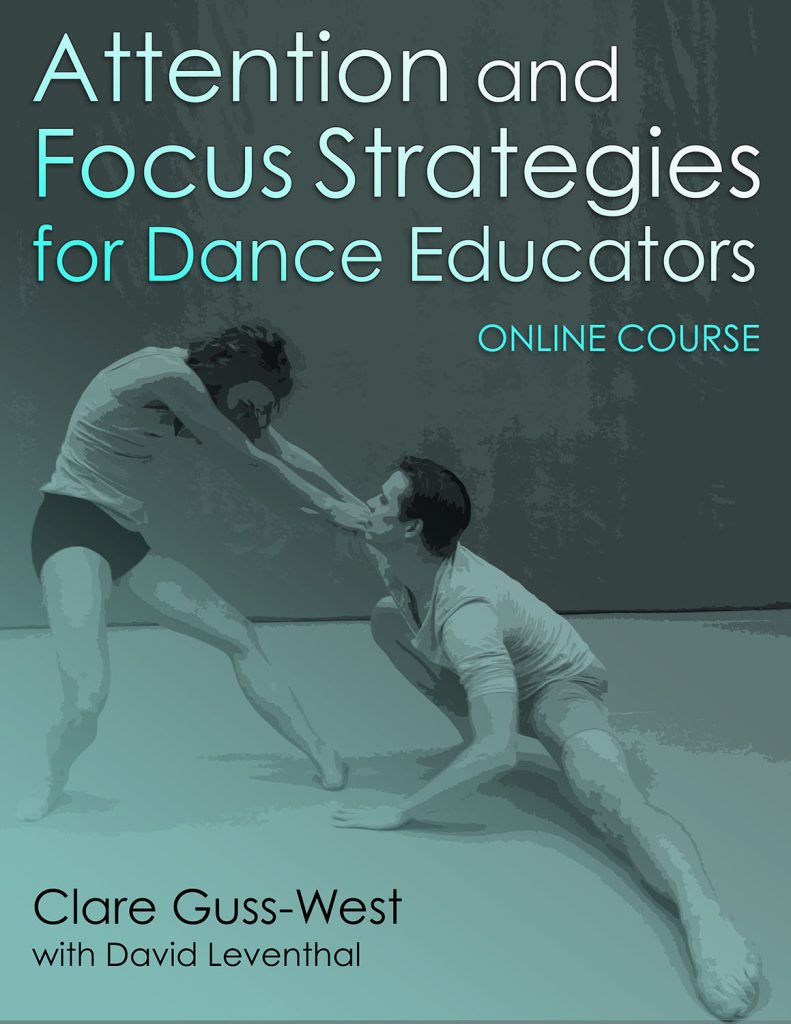FAQ
Clare Guss-West and David Leventhal answer teachers frequently asked questions regarding the use of Attentional Focus Strategies in dance practice based on their professional development course “Attentional Focus Strategies for Dance Educators” (2023).
If you don’t find the answer to your question then be sure to contact us using the contact form and send us you question – we will do our best to answer directly to you and to publish the question and answer here:

Clare Guss-West 
David Leventhal
“I feel really comfortable applying an EFA approach to most aspects of movement, but I get stuck on the feet. In ballet, there’s so much emphasis on foot movements and specificity, and I find myself using anatomical cues much more than I want to. How can I change my patterns?“
DL: As with all EFA prompts, focusing on the effect of the foot on the floor or the space around the dancer can go a long way toward introducing an external focus of attention when describing foot movements. Using words like ‘brush’, ‘slide across’, ‘skate across’ or ‘massage’ when referring to how the foot relates to the floor are effective ways to enhance foot articulation. The French vocabulary of footwork can be harnessed for its rich imagery (stretch, melt, prick). Can the foot paint a stripe on the floor? What is the texture of the floor – are you on the beach? What kind of footwear are you wearing? Even changing the focus from “press up to the ball of your foot” to “let your magic shoes float you up” can help students focus differently on their lower body movements.
“I trained with teachers who primarily utilized anatomical prompts to instruct, and there are times in my teaching where I feel I need to use an internal focus of attention to ensure clarity. Am I a poor teacher if I still use internal focus references – and am I doing my students a disservice?“
DL: It’s helpful to remember the ‘spectrum approach’ highlighted in the course – that our teaching toolkit encompasses an entire spectrum of possibilities from IFA prompts on one side and EFA prompts on the other. As dance educators, we need to feel freedom and flexibility to slide along the spectrum, highlighting prompts we think are going to serve our students. Like a surgeon choosing her tools, dance educators need to make informed decisions about which tools to use when, and with which student. Although an EFA approach leverages considerable, research-backed benefits, there is no single tool or choice that is perfect at all times, and you should feel free to slide along the spectrum as needed. That said, we encourage you to consider an EFA alternative to IFA feedback as part of your development as a dance educator and empowered communicator so that over time, you are comfortably fluent in both approaches.
“I find myself getting tongue-tied or having mental blocks when trying to think of creative and inspiring EFA prompts. What can I do to enrich my creative vocabulary and support the rich language that seems to be essential in providing EFA prompts.“
DL: Keep in mind that EFA prompts do not have to be fancy or plumb the depths of your creative powers. Some of the most effective teachers use everyday imagery – the actions of daily life – to enhance their teaching practice through EFA prompts. For example, New York-based master teacher, the late Marjorie Mussman, used to encourage her students to think about their directional eye focus in a leap by comparing dancing to driving – driving forward while looking sideways is a bad idea on the road, and it’s a bad idea in an grand jete. Just like driving, keep looking where you’re going (and not in the mirror!). Mussman didn’t talk about luscious bouquets of flowers in front of you, or quote poetry – she talked about driving. Dance educators are teaching artists, and artists are constantly observing and making internal notes about the world around us. By honing your powers of observation of everyday things, and by making connections in your mind between those everyday events and dancing, you’ll develop a rich palette of ideas that can support your students through EFA-based teaching. As well, exposing yourself to poetry, paintings, music and dance performances can further enhance your vocabulary of EFA cues – and finding online videos of master classes in music or dance technique with top-level performing artists who focus on EFA feedback can be a great way of stimulating your own EFA toolkit. Keep in mind, too, that focusing on music, partnering, historical context or expression are all effective EFA prompts that don’t rely on generating creative imagery.

